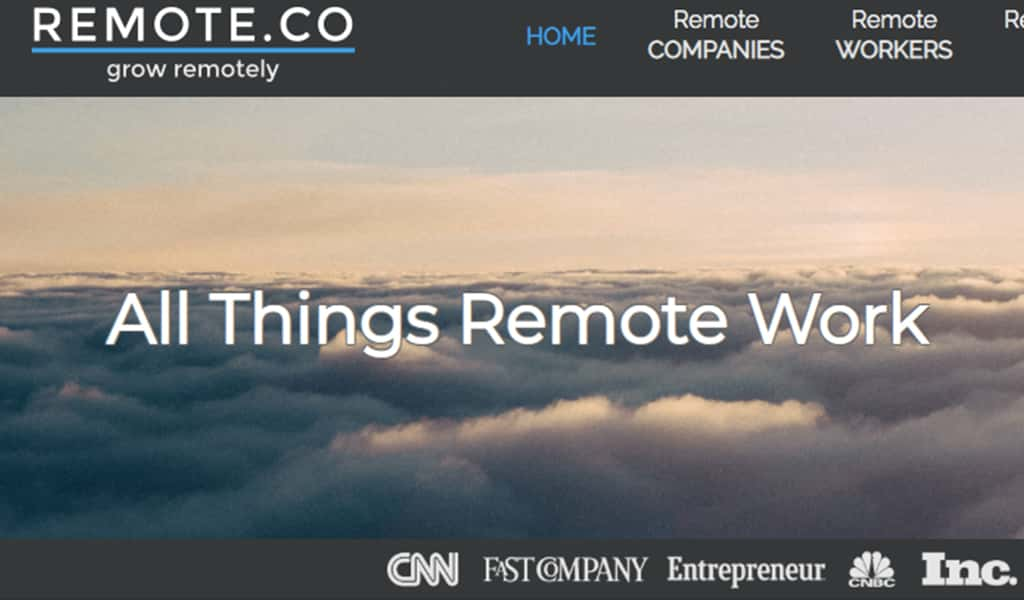How to start with freelance jobs
Freelancing is one of the best jobs you can have in 2018 for many reasons: remote work is on the rise, more businesses and entrepreneurs are hiring freelancers. Plus, the infrastructure of freelance communities is becoming stronger every day.
If you’re thinking of joining the ranks of freelancers, you’ll be in good company. Upwork’s 2018 Freelancing in America Survey says 56.7 million Americans freelanced this year. And more of those people are freelancing by choice (61%, up from 53% in 2014), not necessity.
Freelancers Union’s Freelancing in America 2017 study predicted freelancers will make up the majority of the U.S. workforce in just a decade.
But where do you start? We’ve got a few quick tips for you!

Create a basic business plan
Every successful startup or freelance business starts with a well-formed and executed idea. It doesn’t need to be a 100-page document that sits on a shelf and collects dust. For freelancers, creating a large business plan up front would be a waste of time since there are so many unknown factors. Instead, save that step for the growth/investment phase (if you reach that stage) and get yourself a copy of the Lean Canvas, which was adapted by Ash Maura from the popular Business Model Canvas by Alexander Osterwalder.
The Lean Canvas uses a nine-block concept to help you identify your business model and fill in the blanks about your product or service and how you’ll market it.
Pick a discipline and niche
Do you have an eye for the visual, or are you a word wrangler? Maybe you love crunching code and building beautiful websites. Whether your skills are in writing, design, development or something else, this is the time to master the basics and learn from diverse sources such as books, courses, articles, online tutorials and knowledgeable professionals in your community.
Next, decide whether to generalize or pick a niche. There are arguments for and against choosing a niche – many say you can target your message better and make more money when you have specialized skills. Know the benefits and risks and decide which is right for you.

Build a portfolio
Before they hire you, potential clients (rightfully) want to know you’ve got the experience and skills to get the job done. They also want to get a feel for your style and the work you’ve completed for previous clients. A portfolio allows you to showcase your work to clients you want to serve. It should be a living document, so naturally you’ll include as much as you can when you’re new to your field and pare down as you gain experience.
The projects you highlight don’t have to be paid. For example, are you a new graduate with school, co-op, internship, or volunteer projects under your belt? Include them. Switching fields or starting fresh? Create sample pieces (indicate them as such to maintain transparency). Writers can publish content on their own sites and on Medium, submit guest posts and write about events happening in their community; designers can build mockups and wireframes, and developers can include code they’re proud of.
Pro tip: Go beyond just linking to your project. Write a detailed description of the project and how your work helped the client. Include screenshots.
Skillcrush has some great tips for designers and developers on how to build an impressive portfolio site. If you’re a writer, check out freelance writer Courtney Hall Lee’s advice on how to create a portfolio with zero experience.
You don’t have to build your portfolio from scratch. If you’ve got a LinkedIn account (you’re on LinkedIn, right?), you can add projects to your profile. Platforms such as Contently and others exist to help freelancers showcase their work and match talent to companies. If you’ve got a website on WordPress or another Content Management System, your portfolio can live there (more about that below).

Create a website
Your website is your online home and is an absolute must-have for any freelancer, since you’ll rely on it to generate new leads. A well-designed website is fast, user-friendly, mobile responsive, secure, and optimized for search engines.
This is where knowing who your ideal customer is will come in handy, because every word on your site should be geared toward building a relationship with them and persuading them to reach out.
Take time to scope out sites of other freelancers in your industry to identify aspects you love (and ones you definitely hate). Doing this will help you form ideas of what to include on your own site. You’ll want to start with a few basic pages, including:
Home
Include your value proposition, a brief description of your services, and your contact info.
About
Here’s your chance to establish a personal connection with your visitors. The secret to a great about page that gets you noticed and wins clients is that it’s as much about them as it is you. Share your story, demonstrate your experience and express your passion, then tie it back to their pain points and problems. Include a call to action to book a call with you at the bottom.
Services
Which services do you offer, and how are you different from the competition? Focus on your ideal client, their pain points and problems, and how you solve them.
FAQ page
Do a quick survey of your target market. What are the most common questions your potential clients will have about your services and process? Create an FAQ document and post it to your site. Now you can send people a link (or copy and paste the answer), without needing to type out a reply each time.
Contact
The contact information you add here is your choice. Because some people prefer contact via traditional means, you may want to list your email address (Email: name (at) gmail (dot) com, and a phone number, along with your social accounts, mailing address and an email form asking for (a few) details about them and their project.)
Just like with your portfolio, you’ve got a variety of choices when it comes to where to build your website if you don’t want to hire a developer or write code. WordPress is a popular choice for freelancers (you can use a page builder plugin to streamline the process). There’s also Squarespace and Wix , and a few other platforms.
Related: How to choose the best website builder – WPBeginner
Pick one based on your needs, budget and current and future goals. You’ll also want to add your website to all aspects of your branding – social media channels, business cards, email signature, and anything client-facing – so people know where to find you.

Start with a few must-have tools
In your first year, you’ll need all the help you can get to run a lean, mean, productive and efficient practice. There are tools out there to help you do just that, from web-based project management and time-tracking software to lead management programs and social media automation apps.
Of course, one caveat is that you can sink so much time into trying different tools that you get bogged down in indecision and overwhelm. Don’t let that happen – choose a few that fit your needs and get to work. You can always change your toolset as you develop and hone your processes.
AND CO has compiled 600+ tools & resources for freelancers.
Find your ideal client
The deeper you get to know your customer, the better you can market to them. That’s why you need to develop a profile of your ideal client. Think of projects you’ve worked on (if you’re launching your freelance career, reflect on jobs, volunteer positions, co-ops, etc.) in the past and ask yourself these questions:
• What did you like about these experiences?
• What were the good, bad, and ugly parts?
• What about your bosses/clients themselves – what were their good qualities?
• Which industries were these people in?
An important step in defining your ideal client is to identify your boundaries and expectations. Decide which behaviour you absolutely won’t put up with as well – this could include:
• Verbal abuse
• Non-payment or chronically late payment
• Disrespecting you or your time
• Refusing to understand the difference between an employer-employee relationship and a business-freelancer relationship
• Anything else that will make them a “client from hell.”
Your definition of an ideal client will change over time. As you gain experience, you’ll naturally accumulate more data about who you work with best with, and which projects you gravitate to. In the meantime, designer Benek Lisefski and Freelancing Digest have published informative articles on this topic.

Sign up to freelancer sites
You should absolutely be networking locally, but there are also umpteen websites dedicated to matching freelancers, remote workers and independent contractors with clients. Sign up to mailing lists and create profiles on sites where you’re likely to find your ideal client. These can include:
• Upwork
• Fiverr
• FlexJobs
• LocalSolo
• Nodesk
• Remote.co
• We Work Remotely
Of course, this is a small sample of an ever-growing list of remote work and freelance sites. Forbes and Skillcrush have compiled extensive lists of frequently updated sites, both general and industry-specific.

Network, network, network
It’s great to create profiles on freelancer sites, but authentic, in-person relationships are the lifeblood of your freelance career. This is because while you’re one face among many in a sea of freelancers looking for work online, people remember personal connections.
ABN – Always Be Networking – is a popular acronym among freelancers for good reason. The good news is that, contrary to popular belief, networking isn’t all about you. Knowing that people mostly care about themselves and finding solutions for their own problems (not judging your ability to dazzle during conversation) may help take some of the pressure off of introducing yourself if you tend to feel anxious about meeting new people.
Here are some ideas for how to get started:
- Attend a meetup
- Join a professional organization
- Search for online groups and forums
- Volunteer your time with an industry-related organization
- Join a co-working space
Pro tip: Step up your networking game and apply to speak at an event. Organizers are always looking for speakers and it’s a great way to establish authority and credibility among potential customers.
Bonus tip: Spend your time networking with others in your industry as well as potential customers. Spread your time among groups in your industry as well as general business groups, and you’ll grow a diverse, thriving network.
For more networking tips, see Torquemag’s 6 tips on how to improve your freelance business through networking and Double Your Freelancing’s How freelancer’s can make the most of networking events.
You’ll have a lot on your to-do list once you decide to launch your freelancing career, but if you’re prepared to put in the work to plan, create a simple website, research and find clients, and network, you’ll soon be on your way to building a thriving practice.
Resources
Here are some more handy resources about freelancing:
Free
5 valuable online communities for freelancers – Mashable
11 facts to know about freelancing in 2018 – Tech.Co
The freelancer’s guide to finding a profitable niche – Freelance to Freedom Project
Paid
The Freelancer’s Bible: Everything you need to know to have the career of your dreams – on your terms.
